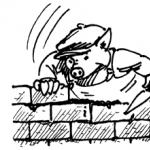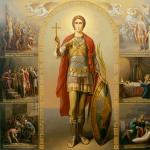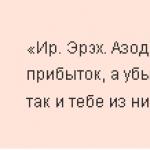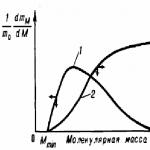
Medieval Chinese Literature Chinese medieval literature is extremely rich in content. The genre of fiction arose in the 3rd-6th centuries. in the form of so-called “stories about the miraculous.” This genre was leading in the Tang era, and subsequently enjoyed great popularity. During the Song era in China, a story appears. The Yuan era was characterized by the flourishing of drama. The reign of the Ming Dynasty was beneficial for the flourishing of narrative prose in the form of epics and novels. Poetry has always occupied a dominant place in Chinese literature, so even prose is always saturated with poetry, which, in the opinion of the Chinese, can best express human feelings and emotions.

Wang Wei The poetic heritage of Wang Wei amounts to about four hundred poems, collected by order of the emperor by Wang Jin after the death of the poet. Wang Jin claimed that this was only a small part of what was written; everything else perished during the rebellion. The surviving poems contain many motifs traditional to Chinese poetry, but their main theme is the poetry of nature, the comprehension of the inexpressible connection between man and the world, experienced as a revelation of beauty. In essence, this motive is present in everything that the poet writes, whether it is about parting with a friend, about the loneliness and sadness of a woman, or about a humorous address to close friends. Expressed extremely sparingly, this experience forms the semantic center of Wang Wei's poetry, predetermining the main features of his style. Many of his poems are based on a simple comparison of two images, the connection between which is devoid of explicit expression (such as the poems “Deer Notch”, “Magnolia Fence” from the “Wanchuan River” cycle, etc.).


Works of Wang Wei Founded the school of monochrome landscape painting. Created landscapes using ink blur. I painted silk and walls. Extant works (in copies): River under the snow (located in the Gugun museum) Mountains under the snow (Gugun) Beijing (private collection in Japan) Portrait of Fu Sheng from Jinan (Japan) After the snowfall (Japan)

Li Bo Li Bo () Chinese poet of the Tang Dynasty. Known as the Immortal Poet, Li Bo is among the most revered poets in the history of Chinese literature. He left behind about 1,100 works. The Western world became familiar with his work through Ezra Pound's free translations of Japanese versions of Li Bo's poems. Li Po is known for his indefatigable imagination and outstanding images of Taoists in his poetry, as well as his love of alcohol. Like Du Fu, he spent a lot of time traveling, although in his case it was more because he could afford it than because he was poor.

Li Bo Li Bo's lyrics are characteristic of all ancient Chinese poetry. The main motifs of the poetry of Li Bo, the greatest stylist of his time, are the praise of wine, flowers, the moon, friendship, and nature in general. The most famous works of Li Bo: “Measured, pure melody”, “Trends of antiquity”, “I sing alone under the moon”, and a classic example of prose: “Spring feast in the peach garden”, as well as numerous quatrains.

Medieval Indian Literature Indian medieval literature presents a very motley picture, both in terms of genre and in terms of language. At the beginning of the 11th century, Sanskrit becomes a dead, bookish language. Therefore, along with Sanskrit literature, a variety of literature appears in new languages and dialects. The prose work “Panchatantra” (“Five Books”), the first version of which appeared in the Gupta era, was especially popular. This work (as well as the Mahabharata and Ramayana) traditionally uses the technique of a “framed” or “frame” story: one story is inside the second, the second is inside the third, etc. The Panchatantra was partially translated into Arabic, Persian, Syriac, Greek, and Latin and had a great influence not only on Indian, but also on Muslim and European literature.

Amir Khosrow Dehlavi (1253, Patiali, now Uttar Pradesh, 1325, Delhi), Indian poet, scientist, musician. Turkic by origin. Wrote in Persian, Urdu and Hindi; also popular among Persians and Tajiks. He was the court poet of India. Proximity to the Sufi dervish order "Chishti" was reflected in his work; he praised the head of the order, Nizamaddin Auliya, in verse, calling him a spiritual mentor.

Amir Khosrow Dehlavi Amir Khosrow Dehlavi left many poetic, literary and historical works. His lyrics are collected in 5 divans: “The Gift of Youth” (written 1272), “Middle of Life” (written 1284), “Completeness of Perfection.” (written 1293), "The Chosen Remnant" (written 1316) and "The Ultimate of Perfection" (written 1325). In the work of Amir Khosrow Dehlavi, a prominent place is occupied by romantic poems: “Devalrani Khizr Khan” on a plot from the life of the court, etc. He created a quintuplet based on the model and plots of Nizami’s poems: “The Rise of the Luminaries” (written 1298), “Shirin and Khosrov” ( written 1298), "Majnun and Layla" (written 1298), "Iskander's Mirror" (written 1299) and "Eight Gardens of Eden" (written 1301).

Amir Khosrow Dehlavi Using Indian folklore, Amir Khosrow Dehlavi made many significant changes to these stories. Collections of poems, riddles and sayings in Hindi attributed to Dehlavi have survived. The dictionary of synonyms "Khalikbari", containing Arabic, Persian and Hindi words, is also attributed to him. He composed many tesnifs (folk songs) in Urdu, which are performed by Indian singers.

Vidyapati (Biddepoti) () Vidyapati is an outstanding representative of Old Indian poetry of the 14th-15th centuries, who glorified the love relationship of the young beauty Radha and the divine youth Krishna. High poetry, subtle depiction of human feelings, colorful pictures of Indian life and nature, genuine folk wisdom make Vidyapati’s poems one of the masterpieces of world lyrical poetry.

Creativity of Vidyapati Songs about the first night He is the husband of another beauty, and you are the wife of another, And I am ready to connect the two shores, like a bridge. I made every effort to make the meeting take place. Now, oh my lotus, all I have to do is trust fate. When preparing for a secret meeting with him, decorate yourself diligently and remember: hesitation and fear inevitably destroy us. Go with hope, because I handed you the right key, - There is no one who does not want well-being for himself! Translation by S. Severtsev

Kabir () Poet and thinker, spent most of his life in Benares. His ideal of a person is close to the humanistic one; he preached freedom from religious and caste prejudices. According to tradition, Kabir was the son of a Brahmin widow who, to hide his shame, abandoned him on the banks of the Ganges, where he was found by the Muslim weaver Niru and his wife Nima. It was they who took the future poet into their education.

Kabir Sufi traditions are reflected in his work; the poet influenced the entire further development of literature in northwestern India, especially Punjabi literature, for which he became a classic. Kabir's works are popular in India to this day and are known in translations into Indian languages, European and Russian.

Surdas (1478/ /83) Founder of lyric poetry in Bridge (Western Hindi dialect). Born blind, he led a hermit's life, wrote hymns to the glory of Vishnu, and performed them himself in front of listeners. The famous philosopher Vallabhasamprada introduced him to his religious community of eight poets, which became one of the centers of Vaishnava poetry in India.

Creativity of Surdas Surdas wrote poems and songs based on ancient epics, including the Mahabharata and Ramayana, and created Krishna-lila hymns about the earthly incarnation of the god Vishnu in the guise of the shepherd Krishna. In his poems, life is an ocean of troubles, from which only the boatman-God and selfless love for him can save man. Surdas's main work is Ocean of Hymns, a lyric-epic poem consisting of 50 thousand lines. He laid the foundation for a poetic tradition in a dialect that was “alive” until the 20th century. "Me nahi makhan khayo, Maya mori!" (Oh Mom, I didn't eat butter!). "Nisdin velvet ne samare Sada rahat palace righu ham pe. Jab se Sham sidhare." (Since the Lord left, Our eyes have been watering with rain). "Nainhin ko pax dikhao, Prabhu! Pag pak thakar khau me." (Show the way to the blind, O Lord! For I stumble at every step). Pay no attention to my sins, O God! Everyone knows that we are all equal before you. So help me cross the sea of life. Free me from these fetters, this web of delusions. And let Surdas become clean. The sound of a flute comes from within, loud and clear. Surdas feels his soul rising up. For the sake of your own honor, O God, show me the way to the real goal. Now it's my turn to meet You.

Medieval Arabic Literature In the history of literature of this region, one can highlight the existence of three literary languages: Arabic (Umayyad dynasty), then in parallel with it Persian becomes the literary language, and in the 13th century. a third literary language appears - Turkish. The main advantage of Arabic literature was considered to be eloquence, Persian - ideological content and wit, and Turkish - truthfulness and sincerity. The process of formation of the literature of the Arab East was particularly influenced by Indian literature in Persian adaptation, but the Arabs did not accept the ancient literary heritage (as opposed to science and philosophy).

Abu Abdallah Rudaki (IX-X centuries) Rudaki Abu Abdallah Jafar. Born around 860 in Tajikistan, in the village of Panjrudak. The founder of poetry in the Farsi language (it is spoken and written by Iranians, Tajiks and part of the peoples of Afghanistan). He became famous early on as a poet, singer and rhapsodist. According to legend, Rudaki was blind from birth, but thanks to his great abilities he acquired wide knowledge, although he did not study anywhere. In his youth, he was invited to Bukhara by the Sasanian rulers who converted to Islam, and became a recognized leader among poets, achieving honor, fame and wealth in 40 years.

Creativity of Rudaki Rudaki created couplets, of which the poem “Mother of a Warrior”, the autobiographical “Ode on Old Age” and about 40 quatrains of the rubai have survived to this day. At the end of his life he was expelled from Bukhara and died in 941 in his native village of Panjrudak.



Abul-Qasim Ferdowsi (gg.) The greatest poet of Iran, creator of the epic poem "Shah-name" (Book of Kings). Abul-Qasim Ferdowsi b. between 932 and 935/6 AD e. in the vicinity of the city of Tus, in Khorasan (the remains of this city not far from present-day Mashhad), in the family of a dikhkan, as feudal landowners were then called.


Ferdowsi's work "Shah-name" is one of the largest poems in world literature and amounts to about 60 thousand beyts (couplets). It sets out the entire semi-legendary history of pre-Muslim Iran and falls into three large parts: 1) theogonic, outlining the mythology of ancient Iran and the formation of human society in the form of the history of the mythical Pishdadids (kings of ancient piety); 2) the heroic one, dedicated to the wars between Iran and Turan, by Crimea we must understand the nomadic Iranians who waged continuous wars with the sedentary Iranians; 3) historical, containing the history of the Samanid house, its fall and the conquest of Iran by the Arabs.

"Shah-Name" The influence of "Shah-Name" on the entire Iranian literature was extremely great. Almost all further development of the epic in Iran is in one way or another connected with this poem. Attempts to imitate “Shah-name” were made back in the 19th century, when the court poet Qajar Feta-Alishaha tried to glorify the struggle of Iran with Tsarist Russia in the style of F. It was also widespread among the broad masses of the people, where its bearers were special storytellers who presented it, however, with significant digressions and additions.



Nizami Ganjavi Abu Muhammad Ilyas ibn Yusuf (gg.) Philosopher, poet, one of the greatest Persian poets. His legacy is perceived as national in Iran, Azerbaijan, Tajikistan and Afghanistan. Nizami's works had a huge influence on the further development of Persian and Azerbaijani literature. A large number of poetic “answers” and imitations of Nizami’s poems are known, belonging to such poets as Hafiz, Navoi, Jami, etc.

Nizami’s works “Khamsa” (“Five”). It arrived completely. It is named so because it consists of 5 poems: “Treasury of Secrets” (“Makhzan-ul-Asrar”), “Khosrow and Shirin”, “Leili and Majnun”, “Seven Beauties” (“Haft Peyker”) and “Iskander” -name". "Treasury of Secrets." Written between 1173 and 1180. It belongs to the didactic-philosophical genre and is written in line with the Sufi tradition. "Khosrow and Shirin". Written in 1181. "Leili and Majnun." Written in 1188, it develops the plot of an ancient Arabic legend about the unhappy love of the young man Qais, nicknamed “Majnun” (“Madman”), for the beautiful Leili. "Seven Beauties" Written in (1197). "Iskander-name." Written around 1203. Nizami considered it the result of his creativity; Compared to previous “novels in verse”, it is distinguished by some philosophical complexity. In the center is the image of Iskander (Alexander the Great). From the very beginning, he appears as an ideal sovereign, fighting only in the name of defending justice. The poem is divided into two parts: “Sharaf-name” (“Book of Glory”) and “Iqbal-name” (“Book of Destiny”).




Mevlana Jalal ad-Din Muhammad Rumi (gg.) Commonly known as Rumi or Mevlana (September 30, 1207, Balkh, Afghanistan December 17, 1273, Konya, Turkey) is an outstanding Persian Sufi poet.



Rumi's creativity Rumi's literary activity is not diverse, but very significant. Jalaluddin was first and foremost a poet. His lyrical “Divan”, which has not yet been studied in detail, contains qasidas, ghazals and rubaiya quatrains. The poet conveys in them the idea of human value regardless of his earthly greatness; he protests against the deadening formalism of religious ritual and scholasticism. “Mesnevi” is one of the most revered (of course not by the fanatical clergy) and read books of the Muslim world. And in world literature, Jalaluddin can be called the greatest pantheistic poet. The manuscripts of his pantheistic treatise “Fihi ma fihi” (What is in him) are known.

Muslihaddin Abu Muhammad Abdallah ibn Mushrifaddin (r.). Saadi was born around 1205 in the city of Shiraz into the family of a mullah. The full name is Muslithaddin Abu Muhammad Abdallah ibn Mushrifaddin, and Saadi is a self-selected pseudonym. Saadi Shirazi is a Persian writer and thinker. He wandered for more than 20 years dressed as a dervish.
 Creativity of Saadi. In songs, ghazals, qasidas, kits, teaching messages, parables, “instructions to kings,” he posed complex religious, philosophical and ethical questions, preaching appropriate patterns of behavior. His love lyrics, the poem “Bustan” (1257), bearing the nature of a philosophical poetic treatise, and collections of parables (in prose and verse) “Gulistan” (1258), in which Saadi presented the life, way of life and practical wisdom of the people of his era.
Creativity of Saadi. In songs, ghazals, qasidas, kits, teaching messages, parables, “instructions to kings,” he posed complex religious, philosophical and ethical questions, preaching appropriate patterns of behavior. His love lyrics, the poem “Bustan” (1257), bearing the nature of a philosophical poetic treatise, and collections of parables (in prose and verse) “Gulistan” (1258), in which Saadi presented the life, way of life and practical wisdom of the people of his era.

Nuraddin Abdurrahman ibn Ahmad (Jami) (August 18, 1414, Jam, near Nishapur, Khorasan November 19, 1492, Herat) Persian writer, philosopher, musicologist. Jami is considered the end of the classical period of poetry in Persian.

Jami's work The flowering of his work, dating back to the period after 1474, opens with the religious and philosophical qasidas “Sea of Secrets” (1475) and “Radiance of the Spirit”, in which Jami condemns the rationalism of Ibn Sina, and the collection of biographies of Sufi saints “Blows of Friendship from the Abode of Holiness” " (). Over the years, Jami completes the cycle of poems (dastans) “Seven Crowns” (“The Constellation Ursa Major”). "Seven Crowns": Salaman and Absal. Yusuf and Zuleikha. Leili and Majnun. A gift to the noble. () Rosary of the righteous. () Gold chain. () Book of Wisdom of Iskandar. ()

Hafiz (g.) Hafiz is the pseudonym of the Persian poet Mohammed Shamseddin. Born around 1325 in the city of Shiraz into an obscure and poor family, through hard work he received a full theological education and became a “hafiz,” that is, a person who knew the entire Koran by heart. Later he earned his living mainly by ritual reading of the Koran. Literary creativity did not bring in income, with the exception of awards from high patrons, and in many of his poems Hafiz speaks of himself as a “poor poet.” He wrote many famous lyrical ghazals - about love, wine, the beauty of nature and roses. Omar Khayyam Giyasaddin Obul-Fakht ibn Ibrahim Omar Khayyam Giyasaddin Obul-Fakht ibn Ibrahim, Persian poet, mathematician, philosopher, outstanding scientist, Sufi, initiated into the esoteric secrets of the world, was born c., in Nishapur, in the north. east of Iran. Traveled a lot around Iran and Central Asia, lived in Isfahan, Balkh, Samarkand and other cities. He studied poetry, philosophy, and mathematics. He was a follower of Aristotle and Ibn Sina. If not for his successes in poetry, he would have gone down in the history of science as an outstanding mathematician, the author of treatises that opened new horizons in mathematics. His cycle of quatrains “Rubaiyat” gained worldwide fame, the fame of which went beyond the Persian-Tajik and Arab areas. Omar Khayyam died in his homeland, surrounded by veneration and love, around 1122.

Omar Khayyam Khayyam is known for his wise quatrains, full of humor, guile and audacity of the Rubai. Khayyam’s style is extremely capacious, laconic, the visual means are simple, the verse is precise, the rhythm is flexible. In quatrains, the first, second and fourth lines usually rhyme (sometimes all lines rhyme). The main ideas are a passionate castigation of bigotry and hypocrisy, a call for personal freedom. You can understand rubai literally (wine is an earthly drink). You can interpret the rubai philosophically (wine is divine grace).

Omar Khayyam At a press conference on February 2, 2007, V.V. Putin noted the great power of Omar Khayyam’s creativity in resolving issues of bad mood. “As for a bad mood, of course, it happens, like every person. But in these cases I try to consult with my dog Koni, she gives me good advice. My wife recently gave me a good book - poems by Omar Khayyam, there’s also a lot of There is something interesting that can help in such situations. I recommend it."

Poetry in Farsi classical period (X-XV centuries) reveals the role of two branches of the Iranian people in its creation. Initially, it arose in the territory of Central Asia and Khorasan (now included in the borders of Central Asia, northern Afghanistan and Northern Iran), among the so-called “Eastern Iranians” (Tajiks), then it also spread to the territory of Iran, among the “Western Iranians” ( Persians, now called "Iranians"). Thus, until the 15th century. this literature was the common heritage of the peoples living in this territory.
There are two legends about the origin of this poetry.
According to one of them, the crowned darling of fate Shah Bahram Gur Sasanid (5th century), declaring his love with his “delight of the heart” - Dilaram, spoke in poetry.
Another legend tells the story of the creation of the first rubai (quatrain). The young man wandered through the narrow streets and alleys of Samarkand. Suddenly he heard a strange song sung by a boy who was playing nuts with his friends: “Rolling, rolling, he will roll to the hole.” Admired by the children's rhyme, the young man did not notice how, silently moving his lips, he himself began to fold melodic rubai about the beauties of Samarkand and the charm of his home in the mountains of Zarafshan. This young man was Rudaki, the founder of classical poetry in the Farsi language.
The legend about the palace origin of poetry reflects the real-historical fact of the flourishing of early medieval poetry (not in Farsi, but in Central Iranian languages) under the patronage of the powerful Sassanid dynasty - III-VII centuries, which had its own court singers and musicians.
The Iranian peoples of Central Asia and Iran possessed by the 7th century. rich literary heritage in ancient and central Iranian languages, the origins of which go back to the first millennium BC, to the holy book of the Zoroastrian (ancient Iranian) religion “Avesta”.
Invasion of the troops of the Arab Caliphate in the 7th century. to Iran, and later to Central Asia, dealt a crushing blow to ancient Iranian culture. The new religion of the conquerors - Islam and the Arabic language - was planted with fire and sword. “Centuries of silence” have come for Iranian literature. Literature seemed to have ceased to exist: many of the ancient works were burned by the conquerors as blasphemous, and new ones were not written. And yet Iranian literature did not disappear completely; it remained only in a “foreign language state.”
This lasted until the 9th century. The culture of the Iranian peoples turned out to be higher than the culture of the conquerors. The educated layers of Iranians managed to master the Arab tradition, which was new to them, to perceive the most valuable elements of Arab pre-Islamic and Islamic culture, and at the same time managed to preserve the original features of the ancient Iranian tradition.
The work of such writers is also connected with the ideology of the Iranian "Shuubi" (foreign) movements the main thing was the demand for recognition by the Arabs of equality and even superiority of Muslim “foreigners” (that is, not Arabs, but Iranians), instilling a sense of self-esteem and the desire for state independence from the Caliphate.
The services of the Shuubiites in the subsequent emergence of poetry in Farsi, primarily in their translations into Arabic, are invaluable. The contribution of Iranian writers writing in Arabic was so significant and significant that it led to a new stage of development in Arabic poetry itself, which was directly related to the rise of feudalism in the Arab Caliphate, the growth of cities, the expansion of overseas trade and international relations, and the strengthening of the role of Iranian ethnic element in the ruling Abbasid dynasty itself (Abbas is the uncle of the Prophet Muhammad; Abbas’s descendants headed the caliphate (750-1258), the capital of which was in Baghdad) and in the state apparatus (the chief viziers are the Iranians Barmekids).
Thus, Iranian poetry, which initially appeared in Arabic-language garb, not only raised Arabic literature, of which it is an integral part, to a new height, but prepared the preconditions for the subsequent emergence of literature in its native language - Farsi.
Socio-economic changes and powerful anti-caliphate popular movements in Iran and Central Asia brought to power the Iranian dynasties, first the Tahirads and Saffarids, then the famous Samanid dynasty. The Samanids descended from the Sassanids and based their influence on the aristocratic layers of society and the people on the renewal of ancient Iranian traditions.
The Samanid dynasty cultivated its native language, Farsi, and contributed to its development. The aristocracy, led by the monarch, appreciated the role of poetry, which was extremely popular among the people, as a means of strengthening its power and influence. All this objectively opened up wide access for democratic ideas to classical literature. It is important to note that poetry focused its attention (unlike ancient Iranian poetry) not on praising deities, but on the depiction of man- either as a successful monarch and his entourage, or as a simple person.
The fate of the founder of classical poetry in Farsi, Rudaki, symbolizes the path of the emergence and development of poetry, the struggle of two tendencies: folk and aristocratic.
Rudaki was born and spent his childhood and youth in the small village of Rudak (modern territory of Tajikistan), located on the slopes of the Zarafshan ridge. Before becoming famous at the Samanid court, the poet was known as a folk singer and musician. The poet chose the name of his native village – Rudaki – as his pseudonym. Under the conditions of that time, written poetry could only develop at court, and Rudaki appeared in the Samanid palace, where he was surrounded with honor and wealth. But Rudaki here experiences the tragedy of all the great poets, his lyre sounds only for the courtiers and he has to leave the Samanid palace.
The most significant thing in Rudaki’s poetry was the unique discovery of nature and man. The work of the entire galaxy of poets surrounding Rudaki is characterized by an almost complete absence of religious motifs, mystical images and a passionate passion for pre-Islamic motifs and subjects. Hence the numerous attempts to compose the Shahnameh. The excerpts from the works of these poets that have come down to us exude freshness of images, natural simplicity and wit; their works are not yet constrained by the conventions of form, so characteristic of the poetry of later centuries. The humanistic content of poetry to the greatest extent expressed the worldview of a new social stratum that arose in prosperous feudal cities, educated people who lived by mental labor, the medieval intelligentsia.
By the end of the 10th century. As a result of internal contradictions in the state, the decline and then the collapse of the Samanid dynasty began. The current situation was not conducive to the development of literature, however, the end of the 10th and beginning of the 12th century was the most brilliant period in the development of classical poetry. This period is unparalleled in the medieval history of Iranian culture. This period is characterized by the formation of the main genre forms of classical poetry.
The most prominent representative of this period is the brilliant Ferdowsi, who expressed in his Shahnama the resurrection of antiquity, his native antiquity. Ferdowsi's work is characterized by an appeal to an unusual heroic personality. Brought up on the ancient tales of the Iranian peoples, an expert and passionate admirer of his native culture, Ferdowsi in his work turns to the fabulous hero Rustam, who for several centuries, like an impregnable fortress, stood guard over his homeland, uniting around himself all the heroes who were ready to die to save their native land. lands from the constant raids of the Turanians (as in the time of Ferdowsi the ancestors of the Turkic nomads who threatened the Samanid state were called). This is how Ferdowsi conceived the epic about Iranian kings and heroes.
Despite all the differences between the great poets of that time, they share common features: love for their homeland and native language, raising ethical questions, the idea of a just ruler, sympathy for the people, freethinking and the cult of reason.
Deep philosophical thoughts, recognition of the principle of determinism in the universe, cheerful free-thinking, and the spirit of rationalism are characteristic of the internationally recognized poet Omar Khayyam.
He was also a major scientist: an astronomer, mathematician, co-author of the most accurate calendar, discoverer of the binomial, which was rediscovered many centuries later by Newton. Khayyam wrote mathematical and philosophical treatises, but he won world fame precisely for his poetic miniatures - lyrical quatrains.
The work of Nasser Khosrow is associated with the stormy popular anti-feudal movement of the 10th century. In his philosophical works and in many odic works, Nasser Khosrow remained captive of mystical views.
The final period of classical poetry was the XIII-XV centuries.
In the 13th century, a great disaster struck Iran and Central Asia - the invasion of the hordes of Genghis Khan. Many gifted poets who wrote in Farsi were forced to live far from their homeland.
The despotic rule of the Chingizids caused incalculable damage to culture. However, poetry not only did not stop in its development, but even experienced a new rise.
Poetry of the XIII-XIV centuries. carried the features of mysticism and rationalism, and this gave philosophical depth to its two directions:
- philosophical and didactic, appealing primarily to reason, and
- philosophical and lyrical, appealing primarily to feelings.
The first direction prevailed among Saadi, the second among Jalaluddin Rumi.
Saadi lived a long life, a whole century. He himself once said that a person needs to live two lives: in one to seek, get lost, seek again, and in the other to implement the accumulated experience. So he did: he spent the first half century of his life in wanderings and quests. When Genghis Khan's hordes approached his city, he left his home and went to wander around the world. Wherever Saadi visited: the Arabian desert, Azerbaijan and Syria, Egypt and Morocco. He fought with the crusaders, was captured, almost died, but escaped and again wandered through cities and deserts, exposed to countless dangers. Having overcome all difficulties, Saadi returned to his Shiraz as an old man. Wise by experience, having gained great respect for his knowledge and poetry, Saadi spent the second half century in peace. It was then that he wrote his famous books about how to live - a prose and poetic collection of short stories “Gulistan” (“Blooming Garden”) and a masnavi poem “Bustan” (“Fruitful Garden”). Saadi developed the artistic concept of humanism and for the first time, not only in poetry in Farsi, but also in world fine literature, he created the very term “humanism” (“humanity” - “adamiyyat”), expressing it in a beautiful poetic formula that has become world famous:
The whole tribe of Adam is one body,
Created from the dust of one.
If only one part of the body is wounded,
Then the whole body will fall into trembling.
You never cried over human grief,
So will people say that you are human?
Jalaladdin Rumi was a native of Balkh (a city in Afghanistan) and therefore is often called Jalaladdin Balkhi. At the beginning of the Mongol invasion, his father left his native land and moved to Asia Minor. Here Jalaliddin developed as a poet. Rumi is the author of ghazals and the six-volume “Spiritual Masnavi” - an encyclopedia of not only his Sufi teachings, but also folklore, since the poet bases his teachings on parables, legends, fables, anecdotes and short stories, largely of folk origin. Rumi's poetic form - be it ghazal, rubai, masnavi - is always perfect. The main pathos of his poetry is love for people.
The lyrical genre was represented by Hafez. Hafez is a poetic pseudonym; the word “haviz” means a person with a good memory, capable of reproducing the holy book of Muslims, the Koran, by heart. Such was the youth of the poet from Shiraz, whose name Shamsaddin Muhammad was almost supplanted by his world-famous pseudonym. Hafez was revered in his time for his great theological knowledge, but he gained immortal fame as one of the world's greatest lyricists thanks to his ghazals.
Before its extinction, classical poetry again seemed to flare up with a multi-colored flame, especially in the work of Jami. All the creative diversity of his predecessors in their magnificent qasidas, melodic ghazals, masnavi poems is visible in his works. The darling of fate, who enjoyed great honor and respect at the Timurid court, Jami chose the modest lifestyle of a sage striving for truth, far from the vanity of the palace.
If we compare the creative achievements of classical poetry in Farsi with the ancient Iranian tradition, then both their continuity and the innovative nature of the classics, which, in turn, became a tradition for subsequent literary generations, will become obvious.
_________________________________
Slide 1
The work was completed by 7a grade student Kirasirova Amina. Teacher: Kirasirova Havva VildanovnaSlide 2

Slide 3

Slide 4

Slide 5
 Years of life: 860-941 One of the main founders of oriental poetry, was born in the village of Panjrud. He achieved the highest glory and fame at the court of the Sasanian rulers of Bukhara, but at the end of his life he fell out of favor and was forced to return to his native village, where he died. His poetic heritage, according to one version, numbers over 130 thousand couplets, according to another - 1300 thousand, but not much more than 1000 beits have survived to our time. In his work, Rudaki widely used a wide variety of poetic genres - qasidas, ghazals, rubais, etc. His poetry is characterized by a pronounced humanistic pathos, laconicism and simplicity of style. menu
Years of life: 860-941 One of the main founders of oriental poetry, was born in the village of Panjrud. He achieved the highest glory and fame at the court of the Sasanian rulers of Bukhara, but at the end of his life he fell out of favor and was forced to return to his native village, where he died. His poetic heritage, according to one version, numbers over 130 thousand couplets, according to another - 1300 thousand, but not much more than 1000 beits have survived to our time. In his work, Rudaki widely used a wide variety of poetic genres - qasidas, ghazals, rubais, etc. His poetry is characterized by a pronounced humanistic pathos, laconicism and simplicity of style. menu
Slide 6
 The sunrise resembles his glorious name, the Moon is like a cup of feathers, which the Shah drinks in good health. The very happy fate of the leader leads to achievements. All the prosperity of the earth is the fruit of his care. Here the suffering person will not find joyful fruits. This garden is treacherous, this arch is false. The gardener will cut off your life like a dry branch, and a whirlwind will tear off your leaves and carry them away. menu
The sunrise resembles his glorious name, the Moon is like a cup of feathers, which the Shah drinks in good health. The very happy fate of the leader leads to achievements. All the prosperity of the earth is the fruit of his care. Here the suffering person will not find joyful fruits. This garden is treacherous, this arch is false. The gardener will cut off your life like a dry branch, and a whirlwind will tear off your leaves and carry them away. menu
Slide 7
 Years of life: 980-1037 Encyclopedist scientist, poet, was born near Bukhara. He wrote in Arabic and Tajik. He left a huge scientific legacy - about 300 works, among them the “Canon of Medical Science,” which for almost five centuries was considered one of the main medical manuals. Among the philosophical treatises, the most famous are: “The Book of Healing”, “The Book of Directions and Instructions”, “The Book of Knowledge”. Ibn Sina's poetry is distinguished by its deep content and extraordinary clarity of thought. menu menu
Years of life: 980-1037 Encyclopedist scientist, poet, was born near Bukhara. He wrote in Arabic and Tajik. He left a huge scientific legacy - about 300 works, among them the “Canon of Medical Science,” which for almost five centuries was considered one of the main medical manuals. Among the philosophical treatises, the most famous are: “The Book of Healing”, “The Book of Directions and Instructions”, “The Book of Knowledge”. Ibn Sina's poetry is distinguished by its deep content and extraordinary clarity of thought. menu menu
Slide 8
 With two or three donkeys near the mosque, who think they are the wisest in the world, pretend to be a donkey, so that these ignoramuses do not suddenly declare you a giaur. When my friend finds harmony with my enemy, I will be glad to leave such a friend. Beware of the fly sitting on the snake And avoid honey, which contains poison. menu
With two or three donkeys near the mosque, who think they are the wisest in the world, pretend to be a donkey, so that these ignoramuses do not suddenly declare you a giaur. When my friend finds harmony with my enemy, I will be glad to leave such a friend. Beware of the fly sitting on the snake And avoid honey, which contains poison. menu
Slide 9
 Years of life: 1004 – 1072 Born in Kabadian. He was the author of numerous philosophical treatises, prose and poetic works, in which he acted as a passionate defender of the interests of peasants and artisans, not accepting and sharply criticizing the anti-people policies of the Seljuk rulers of Central Asia and the religious tenets of official Islam. menu
Years of life: 1004 – 1072 Born in Kabadian. He was the author of numerous philosophical treatises, prose and poetic works, in which he acted as a passionate defender of the interests of peasants and artisans, not accepting and sharply criticizing the anti-people policies of the Seljuk rulers of Central Asia and the religious tenets of official Islam. menu
Slide 10
 Words that went with deeds apart And into which life could not be breathed - Similar to a “dastambui” melon, no matter how sad: She is a beauty - fragrant, but tasteless... I show the prudent the way: Don’t be a playing ball or a ball! Having flattered the players, in ardent sycophancy the ball is turned towards everyone with its face, not the back of the head. And you are not the one who is not happy to reap, Don’t talk words that you yourself dislike. menu
Words that went with deeds apart And into which life could not be breathed - Similar to a “dastambui” melon, no matter how sad: She is a beauty - fragrant, but tasteless... I show the prudent the way: Don’t be a playing ball or a ball! Having flattered the players, in ardent sycophancy the ball is turned towards everyone with its face, not the back of the head. And you are not the one who is not happy to reap, Don’t talk words that you yourself dislike. menu
Slide 11
 Years of life: 1048 – 1122 Poet, mathematician, philosopher and astronomer; born in Nishapur. He first gained wide fame as the author of mathematical works, and later created a number of works in various fields of science, containing the most valuable discoveries that have not lost their significance to this day. As a poet, he became famous for his quatrains - rubai, bringing this complex poetic genre, containing deep philosophical meaning, to the highest degree of perfection. menu
Years of life: 1048 – 1122 Poet, mathematician, philosopher and astronomer; born in Nishapur. He first gained wide fame as the author of mathematical works, and later created a number of works in various fields of science, containing the most valuable discoveries that have not lost their significance to this day. As a poet, he became famous for his quatrains - rubai, bringing this complex poetic genre, containing deep philosophical meaning, to the highest degree of perfection. menu
Slide 12
 Not a word in the Book of Fate can be changed. Those who suffer forever cannot be excused. You can drink your bile until the end of your life: Life cannot be shortened and cannot be lengthened. He who, from his youth, believes in his own mind, has become dry and gloomy in pursuit of the truth. Claiming from childhood to know life, without becoming a grape, he turned into a raisin. menu
Not a word in the Book of Fate can be changed. Those who suffer forever cannot be excused. You can drink your bile until the end of your life: Life cannot be shortened and cannot be lengthened. He who, from his youth, believes in his own mind, has become dry and gloomy in pursuit of the truth. Claiming from childhood to know life, without becoming a grape, he turned into a raisin. menu
Slide 13
 Years of life: 1210 - 1292 Born in Shiraz, he traveled around eastern countries for more than twenty years, which resulted in the books “Bustan” and “Gulistan”, in which he talked about the life of the working people - farmers, traders and artisans. It was these books that brought him fame as a great humanist poet, champion of the rights of the disadvantaged and oppressed. menu
Years of life: 1210 - 1292 Born in Shiraz, he traveled around eastern countries for more than twenty years, which resulted in the books “Bustan” and “Gulistan”, in which he talked about the life of the working people - farmers, traders and artisans. It was these books that brought him fame as a great humanist poet, champion of the rights of the disadvantaged and oppressed. menu
Slide 14
 A drop rushed down from the cloud and, falling into the waves of the sea, became confused. “How small I am, but here there is such space... I am nothing before the abyss of the sea!” She despised herself, belittled herself; But the shell sheltered the drop; And the pearl, born from that drop, adorned the King’s golden crown. The drop considered itself insignificant - And it shone with beauty and glory. Humility is the path of high sages, So a branch bends under the weight of fruits. menu
A drop rushed down from the cloud and, falling into the waves of the sea, became confused. “How small I am, but here there is such space... I am nothing before the abyss of the sea!” She despised herself, belittled herself; But the shell sheltered the drop; And the pearl, born from that drop, adorned the King’s golden crown. The drop considered itself insignificant - And it shone with beauty and glory. Humility is the path of high sages, So a branch bends under the weight of fruits. menu
Slide 15
 Years of life: 1207 – 1273 Born in Balkh. The author of the famous poem “Masnavi”, in which he gave a figurative interpretation of the main provisions of Sufi philosophy. He illustrated his complex theoretical positions with parables, fables, and short stories, many of whose plots echoed well-known folklore motifs, which made this poem a true encyclopedia of folk life. Rumi was the author of the “Great Divan” (“Devani Kabir”), many ghazals, which he “signed” with the name of his friend Shams Tabrezi. menu
Years of life: 1207 – 1273 Born in Balkh. The author of the famous poem “Masnavi”, in which he gave a figurative interpretation of the main provisions of Sufi philosophy. He illustrated his complex theoretical positions with parables, fables, and short stories, many of whose plots echoed well-known folklore motifs, which made this poem a true encyclopedia of folk life. Rumi was the author of the “Great Divan” (“Devani Kabir”), many ghazals, which he “signed” with the name of his friend Shams Tabrezi. menu
Slide 16
 One day a scientist boarded the grammarian's ship. And this narcissistic husband asked the helmsman: “Have you read the syntax?” “No,” the helmsman answered. “You lived half your life in vain!” - the learned man said. The worthy helmsman was seriously offended, but he just kept silent and kept his appearance calm. Then the wind blew up like mountains, the waves exploded, And the helmsman of the pale grammarian asked: “Have you learned to swim?” He, in great trepidation, said: “No, oh sage of advice, kind-faced!” - “Alas, the learned man! - said the sailor. “You wasted your life: the ship is going down!” » menu
One day a scientist boarded the grammarian's ship. And this narcissistic husband asked the helmsman: “Have you read the syntax?” “No,” the helmsman answered. “You lived half your life in vain!” - the learned man said. The worthy helmsman was seriously offended, but he just kept silent and kept his appearance calm. Then the wind blew up like mountains, the waves exploded, And the helmsman of the pale grammarian asked: “Have you learned to swim?” He, in great trepidation, said: “No, oh sage of advice, kind-faced!” - “Alas, the learned man! - said the sailor. “You wasted your life: the ship is going down!” » menu
Slide 17
 Years of life: ? – 1400g. Born in Khujand, he later lived and died in Tabriz. He entered the history of Eastern literature primarily as a master of ghazals, in which he sang love, loyalty and friendship. In Kamol's poetry, the traditions of folk song are especially noticeable, and the motives of protest that sounded in many of his works reflected the rebellious nature of the worldview of the poet himself. menu
Years of life: ? – 1400g. Born in Khujand, he later lived and died in Tabriz. He entered the history of Eastern literature primarily as a master of ghazals, in which he sang love, loyalty and friendship. In Kamol's poetry, the traditions of folk song are especially noticeable, and the motives of protest that sounded in many of his works reflected the rebellious nature of the worldview of the poet himself. menu
Slide 1
The work was completed by 7a grade student Kirasirova Amina. Teacher: Kirasirova Havva Vildanovna
POETRY OF THE EAST

Slide 2
Study the outstanding Eastern poets of the Middle Ages and their works.
Objective of the project

Slide 3
What are the works of oriental lyricists?
Main question

Slide 4
Rudaki; Ibn Sina; Nasser Khasrow; Omar Khayyam; Saadi; Rami; Cumene; Dogs;

Slide 5
Abu Abdallah Jafar Rudaki
Years of life: 860-941 One of the main founders of oriental poetry, was born in the village of Panjrud. He achieved the highest glory and fame at the court of the Sasanian rulers of Bukhara, but at the end of his life he fell out of favor and was forced to return to his native village, where he died. His poetic heritage, according to one version, numbers over 130 thousand couplets, according to another - 1300 thousand, but not much more than 1000 beits have survived to our time. In his work, Rudaki widely used a wide variety of poetic genres - qasidas, ghazals, rubais, etc. His poetry is characterized by a pronounced humanistic pathos, laconicism and simplicity of style.

Slide 6
The sunrise resembles his glorious name, the Moon is like a cup of feathers, which the Shah drinks in good health. The very happy fate of the leader leads to achievements. All the prosperity of the earth is the fruit of his care.
Here the suffering person will not find joyful fruits. This garden is treacherous, this arch is false. The gardener will cut off your life like a dry branch, and a whirlwind will tear off your leaves and carry them away.

Slide 7
Ibn Sina Abu Ali Hussein
Years of life: 980-1037 Encyclopedist scientist, poet, was born near Bukhara. He wrote in Arabic and Tajik. He left a huge scientific legacy - about 300 works, among them the “Canon of Medical Science,” which for almost five centuries was considered one of the main medical manuals. Among the philosophical treatises, the most famous are: “The Book of Healing”, “The Book of Directions and Instructions”, “The Book of Knowledge”. Ibn Sina's poetry is distinguished by its deep content and extraordinary clarity of thought.

Slide 8
With two or three donkeys near the mosque, who think they are the wisest in the world, pretend to be a donkey, so that these ignoramuses do not suddenly declare you a giaur.
When my friend finds harmony with my enemy, I will be glad to leave such a friend. Beware of the fly sitting on the snake And avoid honey, which contains poison.

Slide 9
NASIR KHOSROW ABU MUIN
Years of life: 1004 – 1072 Born in Kabadian. He was the author of numerous philosophical treatises, prose and poetic works, in which he acted as a passionate defender of the interests of peasants and artisans, not accepting and sharply criticizing the anti-people policies of the Seljuk rulers of Central Asia and the religious tenets of official Islam.

Slide 10
DUPLICITY
Words that went with deeds apart And into which life could not be breathed - Similar to a “dastambui” melon, no matter how sad: She is a beauty - fragrant, but tasteless... I show the prudent the way: Don’t be a playing ball or a ball! Having flattered the players, in ardent sycophancy the ball is turned towards everyone with its face, not the back of the head. And you are not the one who is not happy to reap, Don’t talk words that you yourself dislike.

Slide 11
OMAR KHAYYAM GHIYASADDIN
Years of life: 1048 – 1122 Poet, mathematician, philosopher and astronomer; born in Nishapur. He first gained wide fame as the author of mathematical works, and later created a number of works in various fields of science, containing the most valuable discoveries that have not lost their significance to this day. As a poet, he became famous for his quatrains - rubai, bringing this complex poetic genre, containing deep philosophical meaning, to the highest degree of perfection.

Slide 12
Not a word in the Book of Fate can be changed. Those who suffer forever cannot be excused. You can drink your bile until the end of your life: Life cannot be shortened and cannot be lengthened.
He who, from his youth, believes in his own mind, has become dry and gloomy in pursuit of the truth. Claiming from childhood to know life, without becoming a grape, he turned into a raisin.

Slide 13
SAADI (MUSLIHADDIN ABU MUHAMMED ABDALLAH)
Years of life: 1210 - 1292 Born in Shiraz, he traveled around eastern countries for more than twenty years, which resulted in the books “Bustan” and “Gulistan”, in which he talked about the life of the working people - farmers, traders and artisans. It was these books that brought him fame as a great humanist poet, champion of the rights of the disadvantaged and oppressed.

Slide 14
ABOUT HUMILITY
A drop rushed down from the cloud and, falling into the waves of the sea, became confused. “How small I am, but here there is such space... I am nothing before the abyss of the sea!” She despised herself, belittled herself; But the shell sheltered the drop; And the pearl, born from that drop, adorned the King’s golden crown. The drop considered itself insignificant - And it shone with beauty and glory. Humility is the path of high sages, So a branch bends under the weight of fruits.

Slide 15
RUMI JALALEDDIN
Years of life: 1207 – 1273 Born in Balkh. The author of the famous poem “Masnavi”, in which he gave a figurative interpretation of the main provisions of Sufi philosophy. He illustrated his complex theoretical positions with parables, fables, and short stories, many of whose plots echoed well-known folklore motifs, which made this poem a true encyclopedia of folk life. Rumi was the author of the “Great Divan” (“Devani Kabir”), many ghazals, which he “signed” with the name of his friend Shams Tabrezi.

Slide 16
GRAMMAR DISPUTE WITH THE HELMER
One day a scientist boarded the grammarian's ship. And this narcissistic husband asked the helmsman: “Have you read the syntax?” “No,” the helmsman answered. “You lived half your life in vain!” - the learned man said. The worthy helmsman was seriously offended, but he only remained silent and kept a calm appearance. Then the wind blew up like mountains, the waves exploded, And the helmsman of the pale grammarian asked: “Have you learned to swim?” He, in great trepidation, said: “No, oh sage of advice, kind-faced!” - “Alas, learned husband! - said the sailor. “You wasted your life: the ship is going down!” »

Slide 17
KAMOL KHUJANDI (KAMOLODDIN IBN MASUD)
Years of life: ? – 1400g. Born in Khojent, later lived and died in Tabriz. He entered the history of Eastern literature primarily as a master of ghazals, in which he sang love, loyalty and friendship. In Kamol’s poetry, the traditions of folk song are especially noticeable, and the motives of protest that sounded in many of his works reflected the rebellious nature of the poet’s own worldview.

Slide 18
As soon as the wind blows from the mountains, it will pick off the flower petals, The water in the irrigation ditches will begin to bubble, and dew will fall on the rose. The narcissus is waiting for the rose to bloom - it will also bloom then, The boxwood and cypress are silent, only the nightingale sings then. Praise be to the one who heard the breath of the gardens in the spring, Knew the fragrance of roses and the nightingale's call at night. A beauty will come to the meadows to say that it is not for nothing that I am waiting, That the fruit of desire has ripened and the rose has bloomed in the garden. But everyone who at least once saw her face in the shadow of her hair, Losing his mind, forgot both the cypress tree and the smell of roses! The flower in vain wished to eclipse your lips with its beauty, The gardener plucks flowers from the bush, and the wind is cruel to the petals... Kamol, let your life wither, as flowers wither from the winds, You have found happiness on earth - you have seen colored roses!

Slide 19
JAMI ABDURRAHMAN NURADDIN IBN AHMAD
Years of life: 1414 – 1492 Poet, scientist, philosopher; born in Herat. He was the author of the famous “Semiritsa” - seven poems, a large number of gazelles. chop and beat. His name was widely known in Herat, and the poet himself enjoyed enormous influence in the city, which gave him the opportunity to provide patronage to many cultural figures of that time.

Slide 20
When you fall into a snake's hole, there is mercy here, dear, and pity is not good. Don't wait for the snake's hiss, don't believe its tears... Squash the reptile immediately, or you'll die yourself!
Boasting in vain, friends, is stupider than on a dark night, looking for traces of an ant in the moss of a huge rock... But in the hiding place of my soul, I confess to you directly, it will be more difficult to climb in, than to dig a hole with your nose...

Slide 21
The works of all eastern poets are imbued with a deep philosophical meaning. They are moralizing and meaningful.

Everyone who lives will leave, Only the one who gains good glory during his lifetime is immortal.
Saadi (Muslihiddin Abu Muhammad Abdallah ibn Mushrifaddin) (between 1203 and 1210 - 1292) Persian poet, writer and thinker

The initial core of the caliphate was the Muslim community, the ummah, created by the Prophet Muhammad at the beginning of the 7th century in Hijaz (Western Arabia).
The word caliphate (Arabic خليفة - Khalīfah - “heir”, “representative”) - means both the title of caliph and the vast state created after Muhammad by the Arab conquerors under the leadership of his “caliphs” (viceroys).
The era of the Arab Caliphate, together with several subsequent centuries of the flourishing of pan-Islamic science and culture, is called the Golden Age of Islam in Western historiography.

Syria
Türkiye
Afghanistan
Iran
Spain
Iraq
Israel
Egypt

Islam (Arabic: إسلام [ʔɪsˈlæːm]) is a monotheistic world religion. The word “Islam” is translated as “submission”, “submission” (to the laws of Allah). In Sharia terminology Islam is complete, absolute monotheism, submission to Allah, his orders and prohibitions, exclusion from polytheism . Followers of Islam are called Muslims.

Muhammad(Arabic محمد , in Russian Muhammad, Mohammed (Magomed), Mohammed; born April 20 (22), 571 (according to some sources 570), Mecca - died June 8, 632, Medina) - Arab preacher of monotheism and the prophet of Islam, the central (after one God) figure of this religion.
Fragment of N. Roerich's painting "Prophet Mohammed". 1925

Kaaba
Al-Haram Mosque
The Black Stone is a Muslim shrine, a stone of forgiveness sent to Adam and Eve by God, mounted in the eastern corner of the Kaaba at a height of 1.5 m and enclosed in a silver frame. According to legend, the Black Stone was white, but gradually it turned black, saturated with human sins.

The Koran (Arabic: ألْقُرآن) is the holy book of Muslims (followers of Islam). The word "Koran" comes from Arabic “reading aloud”, “edification”.

The Koran was written down from the words of Muhammad by his companions. The transmission of the Koran was carried out through the angel Gabriel and lasted almost 23 years, and Muhammad received his first revelation at the age of forty, on the Night of Power (the month of Ramadan).
In Islamic countries, the Koran serves as the basis for legislation, both religious, civil and criminal.
There are 114 suras (chapters). All chapters are divided into verses (poetry). In total, the Quran contains 6236 verses and more than 320 thousand letters (harf).
The Quran teaches that Allah cannot be seen or touched; the power of its influence lies in the sacred word.

Calligraphy is one of the types of fine art in which the main means of expression is Arabic writing.
Arabic calligraphy received special development precisely in Islamic culture due to the existing ban on the depiction of Allah, the Prophet Muhammad and living beings in general. The art of Arabic calligraphy is especially revered in the Muslim world, as a means of preserving and disseminating the divine message contained in the Quran.
Calligraphy is sometimes called the most Islamic from all types of art .

Arabesque(Italian arabesco - Arabic) - the European name for a complex oriental medieval ornament consisting of geometric and floral elements.

Architecture
Caravanserai
Caravanserai
Mausoleum
Mausoleum

Mosque (Arabic: مسجد - "place of worship") - a Muslim liturgical architectural structure.
Qubbat al-Sakhra.
Damascus. Umayyad Mosque.
Jerusalem

Tamerlane
Bibi-Khanim Mosque
("Lady Sovereign")
builders unknown
1399-1404, Samarkand
Uzbekistan

Minaret (Arabic: منارة, “lighthouse”) - in Islamic architecture tower(round, square or polyhedral in cross-section), with which the muezzin calls the faithful to prayer. The minaret is placed next to the mosque or included in its composition
Al-Malwiya Minaret
Minaret of Suleymaniye Mosque
Istanbul 1549/50-1557

Mausoleum (in the East: Persian مزار - mazar) - a monument, burial structure, which included a camera where the remains of the deceased were placed, and sometimes a funeral hall.
Mausoleum Gur-Emir, Samarkand, XV century.
Mausoleum of the Samanids
9th century (between 892 and 943),
The tomb where the “shaker of the universe”, the founder of the great empire of the Middle Ages, Amir Timur, his grandson, “the king among scientists and the scientist among kings” Mirzo Ulugbek and other Timurids rest.

Madrasah (Arabic: مدرسة , lit. “place where they study”) - Muslim educational institution, serving as a high school and a Muslim theological seminary.
Sher Dor Madrasah
Registan Square
Tillya-Kori Madrasah
Ulugbek Madrasah

Caravanserai (Arabic: فندق - large public building in the Near and Middle East and Central Asia, in cities, on roads and in uninhabited areas, serving as shelter and stopping place for travelers, as a rule, for trade caravans.
Caravanserai, Karedj, Iran
Caravanserai in Sheki, Azerbaijan


Book miniature
Miniature from the manuscript
"Maqams" by al.Hariri, 1237
Birth of Mirzo Ulugbek.
Copy from an Iranian miniature

Giyasaddin Abu-l-Fath Omar ibn Ibrahim al-Khayyam Nishapuri.
Abu Abdallah
Jafar Rudaki
FIRDOUSI,
Abdul Qasim
(c. 934-1020)

Persian classical poetry
SAADI SHIRAZI
Haji Shamseddin
Mohammad Hafiz Shirazi
1203 and 1210-1292)
(c. 1325-1389 or 1390)
NIZAMI GANJEVI
around 1141 - around 1209)

















